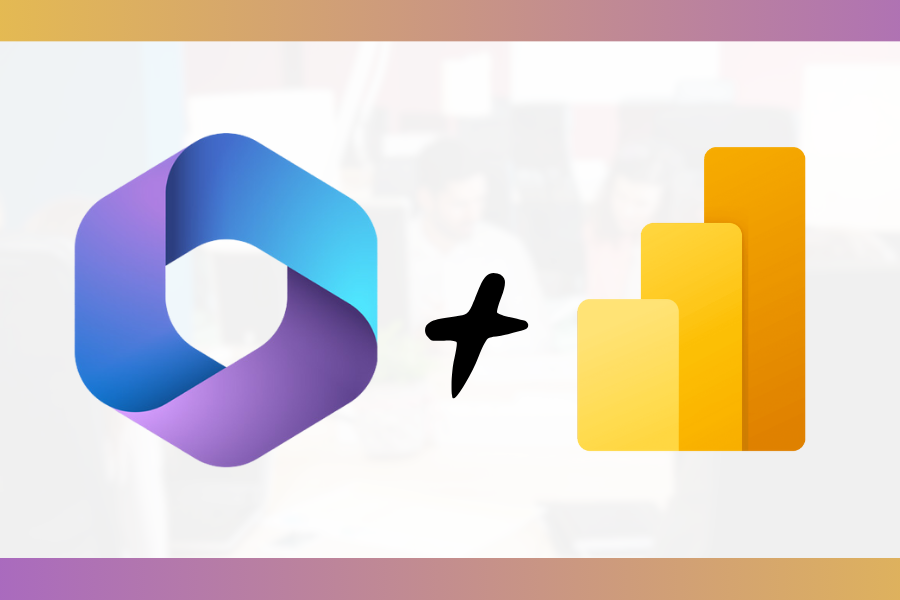Integrating Power BI with Microsoft 365 is a step that allows companies to maximize the potential of their data. By leveraging the Microsoft ecosystem, including tools like Excel, SharePoint, and Teams, data analysis becomes simpler, more intuitive, and accessible to the entire team. This integration enables businesses to utilize the data already collected through Microsoft 365 tools effectively.
Key features of Microsoft 365 integration with Power BI
The integration of Power BI with Microsoft 365 includes several functionalities designed to optimize the potential of both platforms. Here are the most significant ones:
- Direct connection of Excel data to Power BI eliminates the need for manual file imports, streamlining the analysis process.
- Analysis of SharePoint-stored data is straightforward with Power BI. Users can create reports based on data from folders and document libraries, ensuring better file organization and improved management of corporate information.
- Embedding Power BI reports in Teams channels makes collaboration among team members easier. All participants can simultaneously view data, discuss results, and make decisions using Teams alone.
- Receiving Power BI report summaries in Outlook enables users to quickly review key data directly in their email inboxes without needing to log in to Power BI.
Use cases of Microsoft 365 in Power BI
The integration of Microsoft 365 with Power BI offers numerous practical applications that enhance various business areas. By combining the strengths of Microsoft 365 tools and Power BI, companies can streamline processes, improve decision-making, and foster collaboration. Below are some of the most notable use cases:
Financial reporting
- Interactive dashboards allow the transformation of raw Excel data into visually appealing, interactive panels that provide real-time insights into key financial indicators, such as revenue trends, expenses, and profit margins.
- Finance teams can track budgets by importing budget plans from Excel into Power BI, enabling effortless comparison of actual expenses with projections.
- Power BI facilitates the visualization of “what-if” scenarios based on Excel data, supporting strategic planning and risk assessment.
Project management
- Teams can monitor task progress by integrating data from Microsoft Planner into Power BI.
- Power BI enables resource usage analysis across various projects by utilizing data from Planner and Teams, helping managers optimize workloads.
- Dynamic Power BI dashboards that combine data from Planner and SharePoint help identify bottlenecks and potential project risks.
Team communication and collaboration
- Power BI reports can be embedded into Microsoft Teams channels, enabling real-time collaboration based on critical business metrics.
- Power BI reports integrated with Teams or Outlook can be used to review and analyze team performance metrics during meetings.
- By combining Power BI with Microsoft To Do, teams can visualize outstanding tasks and prioritize them based on deadlines and available capacity.
Sales and Marketing
- Data from Dynamics 365 or Excel spreadsheets can be visualized in Power BI, allowing sales teams to monitor sales pipelines and identify high-value opportunities.
- Integrating marketing data from SharePoint or email platforms into Power BI enables the analysis of campaign ROI and engagement metrics.
- Power BI combines CRM data with Teams discussions, providing a comprehensive view of customer needs and preferences.
Human Resources
- Data from SharePoint or Excel can be used in Power BI to visualize recruitment metrics, such as application rates and time-to-fill positions.
- Employee participation in Teams activities, training programs, or surveys can be monitored in Power BI, highlighting trends and areas for improvement.
- Integrating data from HR systems and Microsoft 365 tools enables the creation of detailed reports on workforce demographics and diversity metrics.
Operations and Logistics
- Linking Excel-based inventory tracking sheets with Power BI allows teams to monitor stock levels, track order fulfillment, and minimize waste.
- Integrating vendor data and SharePoint information into Power BI supports the analysis of supply chain efficiency and the identification of cost-saving opportunities.
- Power BI facilitates the visualization of operational or safety incidents recorded in SharePoint or Teams, improving response planning.
Executive decision-making
- Data from various Microsoft 365 tools can be combined in Power BI to create comprehensive dashboards, offering an overview of company performance.
- Power BI’s integration with Outlook allows for automated notifications about critical business updates, supporting timely decision-making.
- Management teams can track progress toward company goals with Power BI reports that use data from Teams discussions and Excel tracking sheets.
Benefits for businesses
Integrating Power BI with Microsoft 365 goes beyond data analysis—it also enhances the overall efficiency of the entire team.
- Improved eficiency – with all data accessible in one place, time spent searching for information is significantly reduced.
- Data-driven decision-making – advanced analytics enable teams to make informed, fact-based decisions.
The integration of Microsoft 365 with Power BI transforms how companies manage and analyze their data. By combining tools like Excel, SharePoint, and Teams, data analysis becomes faster, more intuitive, and accessible to all team members.
Want to learn more? Contact our team to discover how to implement Power BI and Microsoft 365 in your organization and achieve a new level of efficiency.
